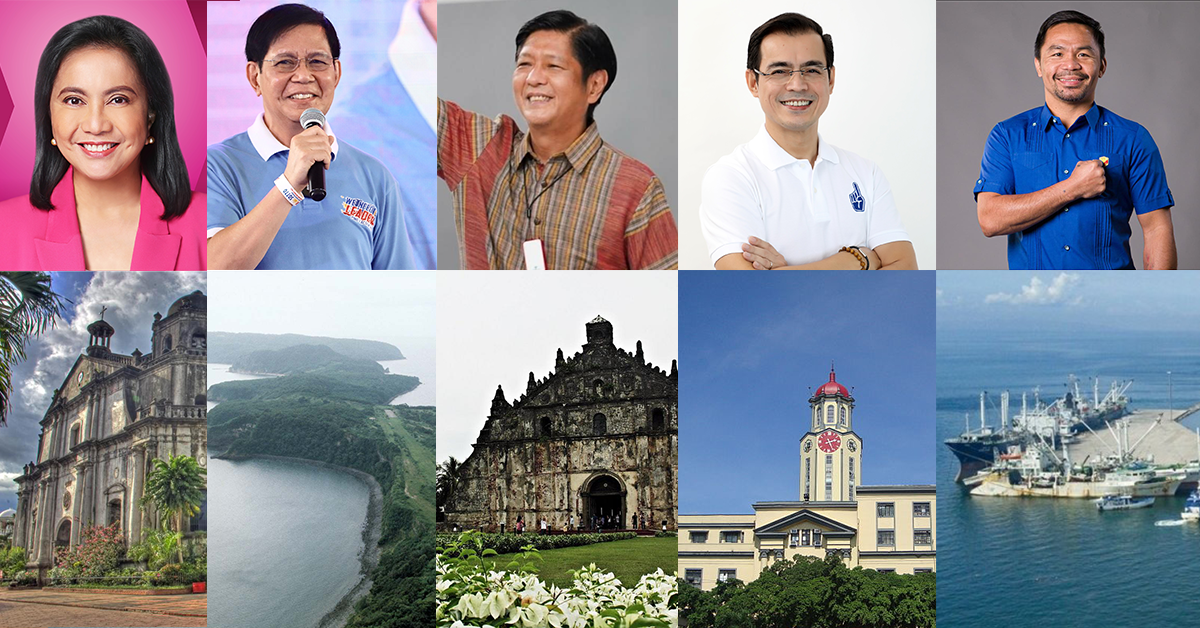With the national bets’ campaign rally officially started, debates between our presidentiables are growing more intense and compelling.
We’ve heard their agendas and stances. Now, let’s learn more about their home province and cities where our next president has been molded. Explore these cities and provinces beyond their status as the home places of our five leading presidential candidates! We listed these places in alphabetical order.
Camarines Sur (Naga)
Vice President Leni Robredo is the Philippines’ second female vice president, following Gloria Macapagal Arroyo, and the first vice president from the Bicol region. She was born in the Province of Camarines Sur. Here are a few of Naga’s historical structures!
Naga Metropolitan Cathedral
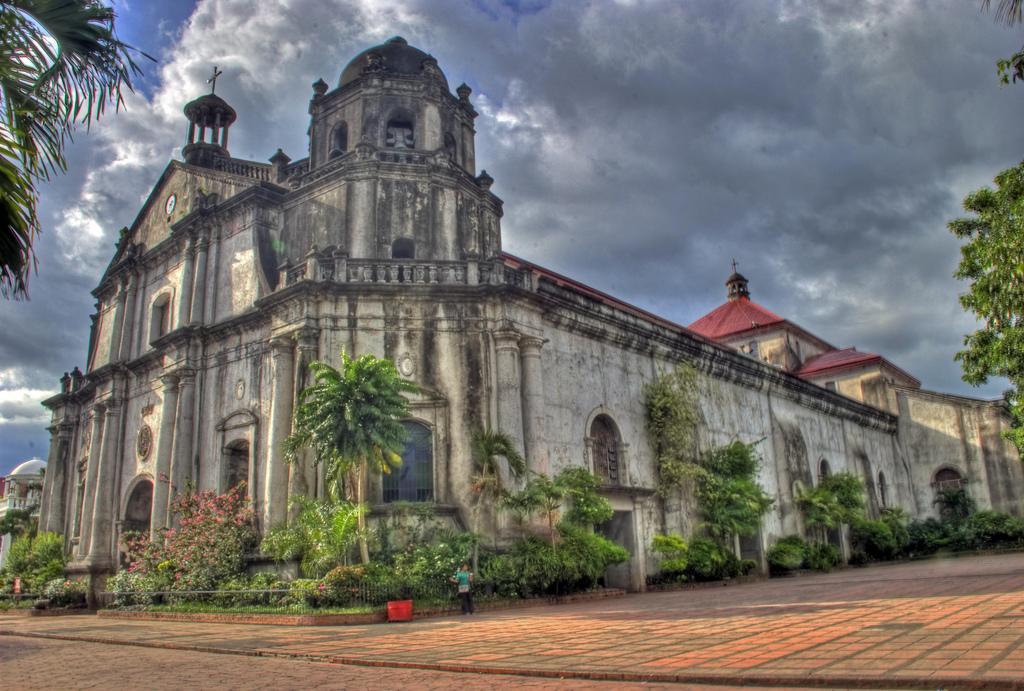
Photo Courtesy: Vigattin Tourism
It is the mother of all cathedrals in Bicol and is the largest church in the province. This cathedral, officially known as “Naga Metropolitan Cathedral of Saint John the Evangelist,” is one of the Philippines’ oldest. They built the original construction beside the Naga River (near Naga’s popular public market), but a powerful earthquake destroyed it in the 18th century.
They transferred the image of Our Lady of Peñafrancia to the Cathedral from the Basilica Minore every September at the Peñafrancia Fiesta during a religious ceremony called “Traslacion.” Millions of devotees travel to Naga for the novena (nine-day prayer) before they return the image to her home in the Fluvial Procession, taking place along the Naga River.
Holy Rosary Minor Seminary
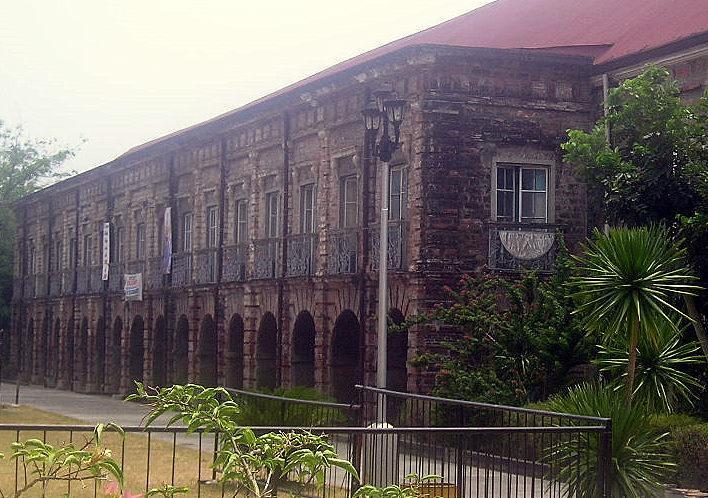
Photo Courtesy: Vigattin Tourism
This Spanish-era structure made of bricks and tiles in 1785 within the Cathedral site as a vocation house is the alma mater of Bicol patriots and heroes. It quickly became the Bicol Region’s epicenter and source of ecclesiastical education. They preserved the district colonial style and feel during renovation.
The National Historical Institute recognized it as a National Historical Landmark on January 29, 1988. Bishop Jorge Barlin of Bicol, the first Filipino bishop, completed his studies at this seminary. Jose Ma. Panganiban, a well-known Bicolano hero, also attended this seminary.
Peñafrancia Shrine
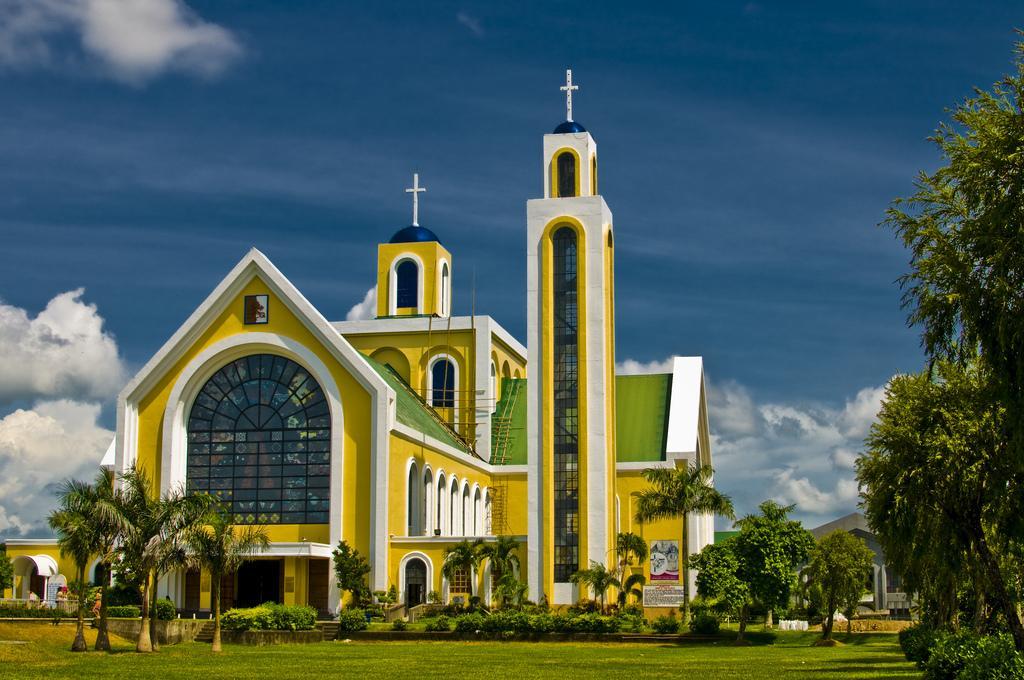
Photo Courtesy: Vigattin Tourism
The original home of the Nuestra Señora de Peñafrancia was made of local materials in 1710, after Fr. Miguel Robles de Covarrubias brought the devotion to Our Lady of Peñafrancia to Bicol.
The current structure was built around 1750 and is still in use today. Its bell, gifted by a wealthy Chinese trader named Don Simon Tuangqui during its renovation in 1864, is still ringing on the belfry today.
RELATED: CALAX is Soon to be a “Green Highway”
Cavite (Imus)
Cavite is the Historical Capital of the Philippines. It’s the birthplace of one of our presidential candidates, Senator Ping Lacson. It is the birthplace of Philippine independence and the cradle of the Philippine Revolution.
Learn about some of the city’s historic structures!
Imus Cathedral

Photo Courtesy: cavite.gov.ph
Imus Cathedral is one of the Philippines’ historic churches. The ceiling, construction, and priceless antiques show its historic significance. Known also as the Cathedral of Our Lady of Pillar, Imus Cathedral is a great place to visit in Cavite especially on October 12 during the feast of Our Lady of the Pillar and Saint John the Baptist.
General Emilio Aguinaldo Shrine

Photo Courtesy: National Historical Commission of the Philippines
General Emilio Aguinaldo Shrine is the home of the first president of the Philippines. On June 12, 1898, the First Filipino Flag was raised to commemorate the Philippines’ independence from Spanish sovereignty.
General Emilio Aguinaldo donated this 1, 325 square meter residence, to the government “to perpetuate the spirit of the Philippine Revolution of 1896, which ended Spanish domination of the country.” The mansion and museum in Kawit, Cavite, is open from 8:00 a.m. to 4:00 p.m. from Tuesday to Sunday.
Corregidor Island

Photo Courtesy: cavite.gov.ph
You may wonder why Corregidor Island is listed under Cavite City, knowing it is historically and geographically nearer to Mariveles, Bataan. However, Corregidor Island is under the territorial jurisdiction and administrative management of Cavite City, therefore, belongs to Cavite.
During World War II, Corregidor Island served as a stronghold for allied troops of Filipino and American soldiers guarding the entry to Manila Bay from Japanese invaders. It is now a historic monument, with large artilleries and structures telling the story of Filipino valor and bravery.
If you’re interested in learning more about Philippine history, go to Corregidor Island and witness the inspiring story of Filipino fighters.
Ilocos Norte (Batac)
Former Senator Ferdinand “Bongbong” Marcos Jr., the only son of the late former president Ferdinand Marcos Sr., is one of the presidential candidates in Election 2022. His father was the representative of the 2nd District of Ilocos Norte when he was born.
At 23, Marcos Jr. started his political journey in his home province as vice governor of Ilocos Norte.
Learn more about the historical structures of this location!
St. Augustine Church
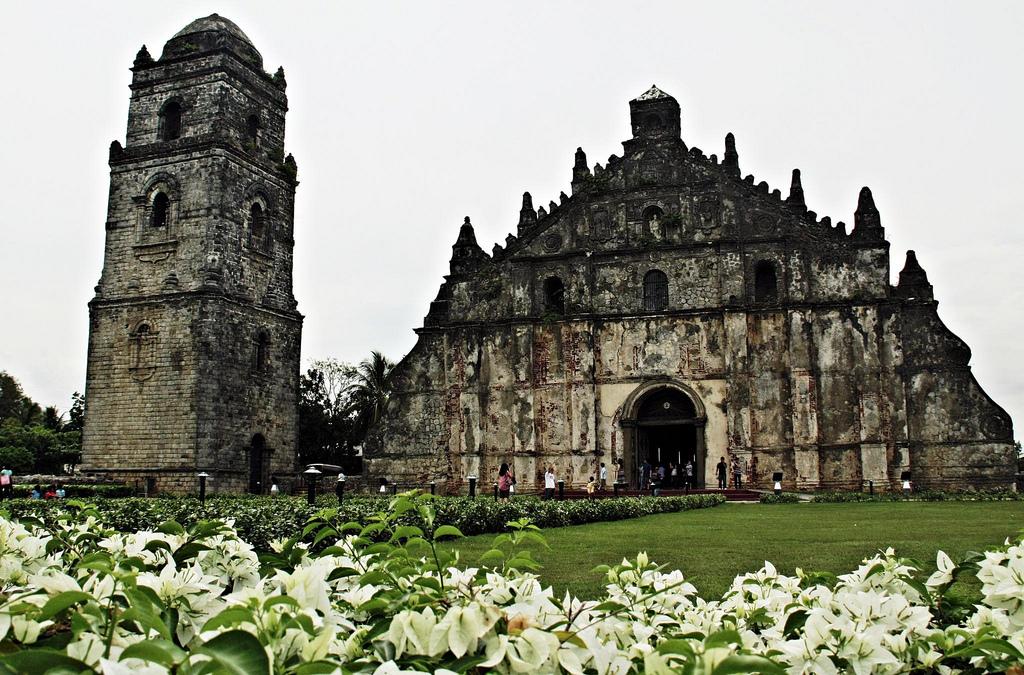
Photo Courtesy: Vigattin Tourism
San Agustin Church, or also known as the Paoay Church, is one of the Philippines’ oldest churches, dating back to 1710. In 1973, the Philippine government recognized it as a National Cultural Treasure, and in 1993, they added it to the list of UNESCO World Heritage Site’s collective group of Philippine Baroque Churches.
Paoay Church stands out among other well-known churches in the region because of its remarkable pyramid-like structure, which is regarded as a prime example of the earthquake baroque style of architecture, which is distinguished by high walls composed of coral stones and bricks.
Bangui Windmills

Because of its location between the South China Sea and the Pacific Ocean, Ilocos Norte Province receives more wind than many other provinces, making it ideal for making electricity from the wind.
The Bangui windmills in the Philippines are near the Asia-Pacific monsoon belt, which makes it a good place to install wind turbines.
Patapat Viaduct
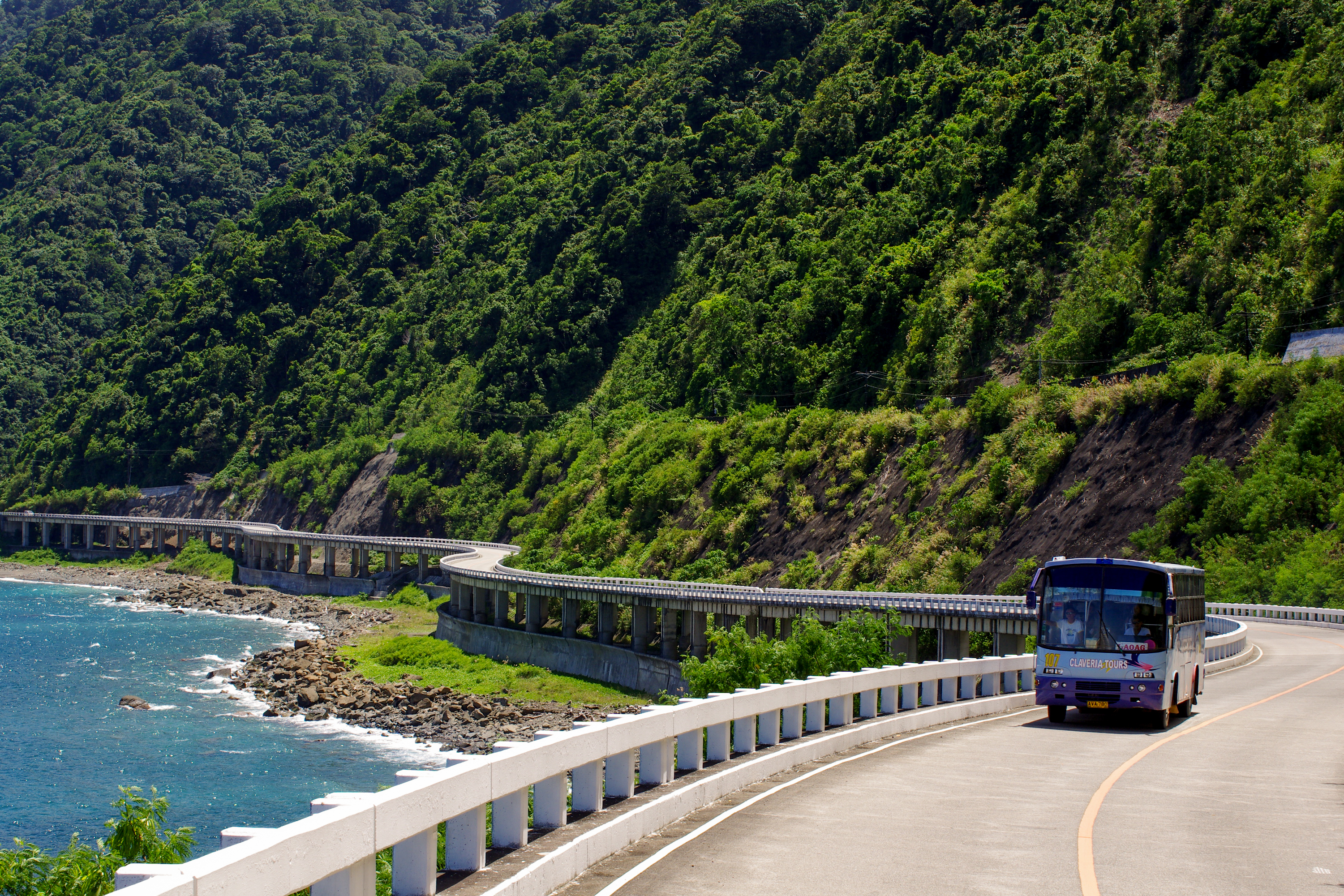
Photo Courtesy: Wikimedia Commons
With a total length of 1,300 meters, the Patapat Viaduct is one of the Philippines’ longest bridges. This bridge connects Laoag, Ilocos Norte and Cagayan Valley via the Maharlika Highway.
The now-famous Patapat Viaduct, dubbed the French Riviera of the Northern Philippines, is attracting not only local but also international travelers. The bridge follows the curving mountain side of the town’s coastal slopes, particularly to address landslides, which have previously resulted in several vehicle accidents.
RELATED: 8 facts about the Manila Metropolitan Theater as colorful as its history
Metro Manila (Manila)
Aspiring president Manila Mayor Isko Moreno was born in Tondo, Manila. Being the country’s capital, let’s look at some of the city’s historical landmarks!
Manila City Hall

Photo Courtesy: Manila City Hall/Facebook Page
The Manila City Hall was one of the most important government structures built during the American regime. It was completed in 1939 and was designed by architect Antonio Toledo.
Its most notable feature is a hexagonal tower with three clocks on three of its vertices. During World War II, it was heavily damaged and restored in 1946. It was criticized at the time for its coffin-shaped floor design. According to folklore, the shape honors those who died during the Battle of Manila.
Malacañang Palace

Photo Courtesy: Philippine News Agency
The official residence of the Philippine president, Malacañang Palace, is perhaps one of the most well-known buildings in the country.
It was once the vacation residence of Don Luis Rocha, a Spanish nobleman. The property was purchased by the Spanish government in 1825, and it has since been home to every Spanish governor general and American civil general. It was built in the Spanish colonial style with its many arches, balconies, and sliding windows.
Malacañang, in the vernacular, means “May lakan diyan” or “There lives a nobleman.” Will this also be the official residence of the running presidential candidate from Manila?
National Museum
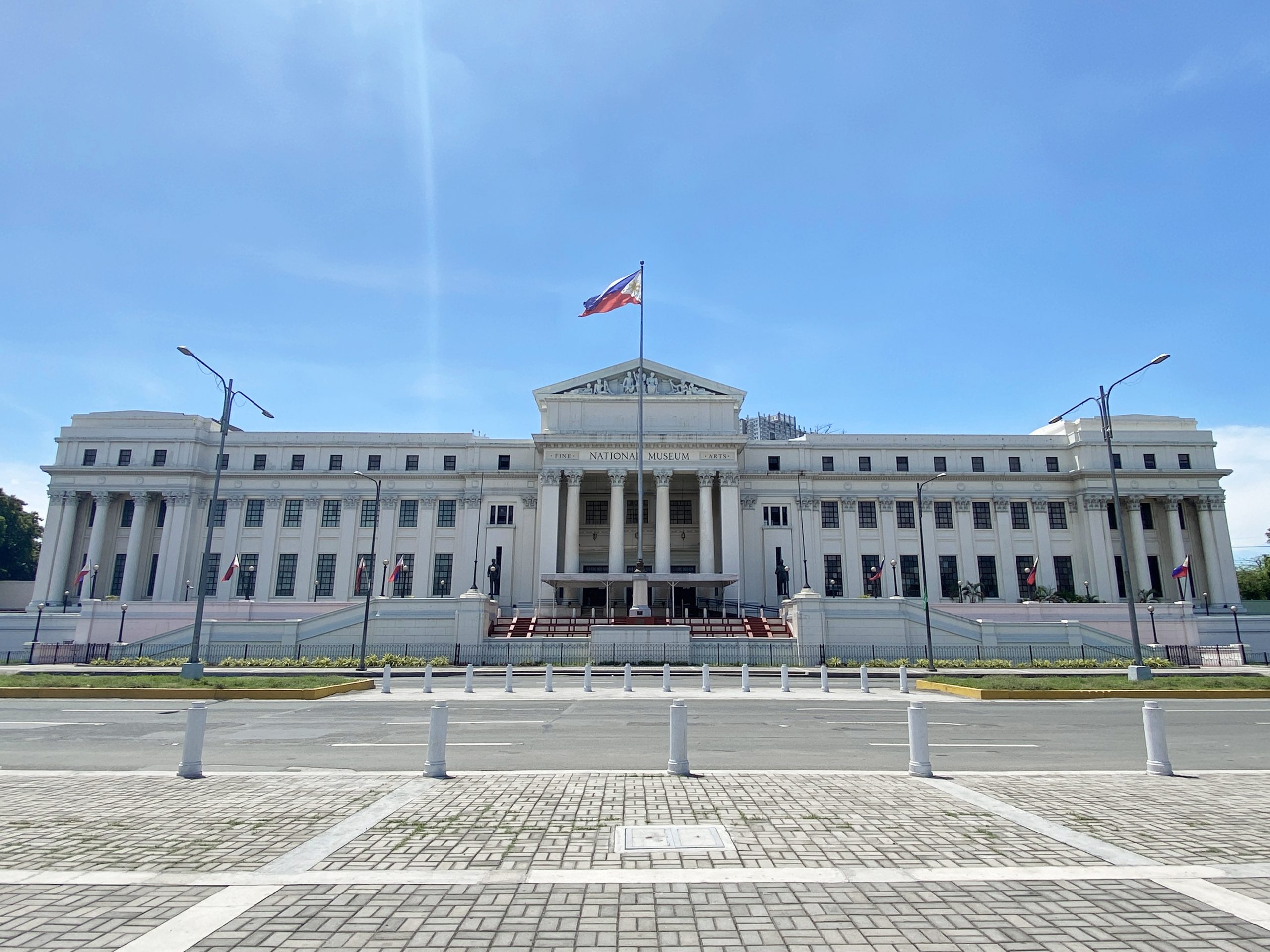
Photo Courtesy: National Museum
The National Museum was undoubtedly the outstanding example of Neoclassical architecture in the Philippines.
American Ralph Harrington Doane designed it with assistance from Antonio Toledo in 1918, intending to become the National Library. Juan Arellano, the designer of Manila Post Central Post Office and Manila Metropolitan Theater, remodeled the interiors of the building when the Philippine Legislature opted to move there in 1926.
The series of Corinthian columns, the two-story porch, and the triangle pediment above it with statues depicting Luzon, Visayas, Mindanao, Law, Education, Commerce, and Agriculture are only a few of the building’s remarkable characteristics.
The National Historical Commission of the Philippines recognized the National Museum as a National Historical Landmark in 2010.
South Cotabato (Gensan)
One of the presidential hopefuls, Senator Manny Pacquiao, grew up in General Santos City, South Cotabato. Let’s look at some of the historical buildings in GenSan, dubbed the Tuna Capital of the Philippines.
Plaza Heneral Santos

Photo Courtesy: General Santos City
The newly developed Plaza Heneral Santos, or General Santos Plaza, is one of the nicest areas in General Santos to go for an early morning or late afternoon stroll (English).
This P34 million Plaza Heneral Santos was unveiled to the public on September 4, 2009, and is one of the busiest parks in General Santos. It is developed by Dellosa Design Builders, Inc, and is on 4.8 hectares of government-owned land.
Manilay Ancestral House
Photo Courtesy: Cumaps.net
The Manilay Ancestral House houses about 300 antiques, including vintage telephones and early model mobile phones, typewriters and teacups, culinary utensils and statuary, old furniture, and more. A few of these objects are loaned.
A variety of religious statues, including life-size images of the Virgin Mary, Jesus Christ, various saints, and a statue of the pregnant Virgin Mary produced in Pampanga that is said to be over 500 years old — also the most valuable piece in the collection — can be found throughout the house.
General Santos Fish Port Complex

Photo Courtesy: Philippine News Agency
The General Santos Fish Port Complex is an 11-hectare complex in General Santos City, South Cotabato, well known for marketing and exporting seafood to both local and international markets.
When walking through the complex, visitors must wear trousers and the white rubber boots that must be rented. You can witness the unloading, weighing, and grading of exceptional yellow finned tuna, bigeye, billfish, and other sorts of fish.
Other than their platforms and their advocacies, isn’t it great to know the hometowns of these presidentiables?
Subscribe now to see more content like this in the future!
CITATIONS:
- Guide to the Philippines. (n.d.). Information about Patapat Viaduct. Retrieved February 16, 2022, from https://guidetothephilippines.ph/destinations-and-attractions/patapat-viaduct
- Pagudpud Ilocos. (n.d.). The Bangui Windmills. Retrieved February 16, 2022, from https://www.pagudpud-ilocos.com/bangui-windmills.html
- Primer. (2017, March 5). Paoay Church in Ilocos Norte: The Stunning Historical Icon of the North. Retrieved February 16, 2022, from https://primer.com.ph/travel/2017/03/05/a-beautiful-piece-of-history-paoay-church/
![]()


